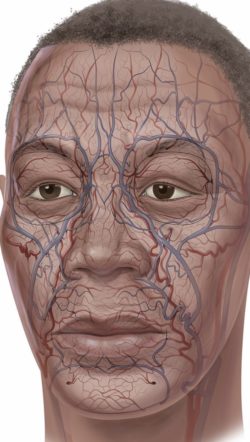Source of article The Jury Room - Keene Trial Consulting.
 We pay close attention to mock juror comments on witness testimony. We typically give mock jurors about 8 minutes of videotaped testimony and then ask for their feedback in rating factors of witness credibility but also with open-ended questions about their memorable impressions of each individual witness. This feedback process has resulted in a number of blog posts over the years as we took in mock juror advice for potential witnesses: Don’t put your fist in your mouth; “I can look in his eyes and tell he is a liar”; Don’t testify with a cold or runny nose because I know you are using cocaine; “Stop mumbling!”; Don’t wear too much hair product and keep your tongue in your mouth; and oh, so many, many more. This was
We pay close attention to mock juror comments on witness testimony. We typically give mock jurors about 8 minutes of videotaped testimony and then ask for their feedback in rating factors of witness credibility but also with open-ended questions about their memorable impressions of each individual witness. This feedback process has resulted in a number of blog posts over the years as we took in mock juror advice for potential witnesses: Don’t put your fist in your mouth; “I can look in his eyes and tell he is a liar”; Don’t testify with a cold or runny nose because I know you are using cocaine; “Stop mumbling!”; Don’t wear too much hair product and keep your tongue in your mouth; and oh, so many, many more. This was
Recently, we had a mock trial where jurors evaluated one of those “salt of the earth” sorts of witnesses that we really like because jurors see them as “real people”—in cases from gas and oil industry disputes to contract breaches. This time though, there was a disconnect. Half the jurors saw the witness as a maverick and plain-speaker despite his white-collar position. The other half saw him as frightening, angry and about to explode. It was instructive.
When this open access article came out, it reminded us of that witness because it just made intuitive sense. The authors say they have “identified patterns of facial coloring unique to every emotion studied” (it was a computer algorithm study). How in the world? We wondered too. Here is what they did.
For this study, the researchers first took hundreds of pictures of facial expressions and separated the images into different color channels that correspond to how human eyes see color—a red-green channel and a blue-yellow channel. Via computer analysis, they found that emotions like “happy” or “sad” formed unique color patterns.
Regardless of gender, ethnicity or overall skin tone, everybody displayed similar patterns when expressing the same emotion.
This was a series of experiments with the final one using people to make sure real people and the computer algorithm matched up. They did. Of course it was more complex than just that, but the long and short of it (according to the researchers) is that their work demonstrates a connection between the central nervous system and emotions. And perhaps this quote from one of the researchers tell us something important for litigation advocacy:
“We identified patterns of facial coloring that are unique to every emotion we studied,” explains Martinez. “Not only do we perceive these changes in facial color,” he concludes, “but we use them to correctly identify how other people are feeling, whether we do it consciously or not.”
From a litigation advocacy perspective, we think the most important part of this quote is: “consciously or not”. We think that is why mock jurors are often so very good at identifying issues we need to address during witness preparation. Their reactions are often unconscious and they sometimes question them, as with this mock juror’s comment on a witness: “He reminds me of Donald Rumsfeld. I’m not sure if that’s good or bad”. So, in addition to things like those mentioned above by many of our mock jurors over the years, please add “Don’t let your neck get red and splotchy” (or if you can’t control it, wear a turtleneck).
Benitez-Quioroz, CF, Srinivasan, R & Martinez, AM (2018). Facial color is an efficient mechanism to visually transmit emotion. PNAS.

